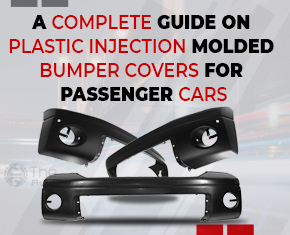Injection molding is used to make the majority of plastic products in the world around you. For more than a century, plastic injection molding has been a dependable and well-established manufacturing method. John W. Hyatt invented the first injection-molded item in 1872, and the industry has advanced significantly since then. Because of the design flexibility & cost-effectiveness it provides, it may be used in a wide range of sectors. Here are a few things you should know before considering whether this manufacturing technique is suited for your project.
What exactly is injection molding?
Plastic injection molding is a manufacturing technique that involves injecting molten plastic resin into a mold cavity to create items. The desired shape can be affected by the speed & pressure with which the material is injected into the mold.
How injection molding works?
Injection molding starts with precision-machining a tool, often known as a mold, out of steel or aluminum. The tool is loaded into the injection molding machine by a machine operator. A hopper supplies thermoplastic resin pellets to the injection molding machine. When the injection molding machine is turned on, these thermoplastic pellets are forced forward into the machine’s barrel by a screw & melted down until they liquefy.
This liquid resin, known as a shot, is collected in a chamber at the front end of the barrel. The thermoplastic resin fired from the chamber is then injected into the tool cavity by the machine. The machine provides pressure until the tool is completely filled with resin. The resin resolidifies after cooling, creating the component. Finally, the part is ejected from the machine and sent to the next stage of manufacturing. This procedure is simple to replicate for manufacturing runs of hundreds to millions of pieces.
Advantages of Plastic Injection Molding
In most production runs, the molding process yields finished components with the manufacturing process completed, unless the part requires extra finishing operations, such as painting. Plastic injection molding is a significant cost-cutting tool since multi-step production methods can be prohibitively expensive. The manufacturing cycle is quite short, which means that the parts may be moved on to the following phases quickly. Plastic injection molding is one of the most cost-effective & efficient production options for generating high component volumes since the molding process may be repeated thousands of times.
Plastic injection molded bumper covers for passenger cars: You undoubtedly see them every day but don’t give them much consideration.
They are made of either plastic or fiberglass and serve two purposes: they protect the bumper and by extension, the entire vehicle and its occupants. Their second role is simply to provide lean to a highly practical component (the bumper), making the entire front end of the automobile more streamlined than it would have been otherwise.
But they’re a big business: The worldwide vehicle OEM bumper cover market was worth more than $30 billion in 2016 and is expected to be worth more than $47 billion by 2025.
Much of this expansion can be due to the ongoing need for greater and improved automobile safety. However, part of it can be attributable to sheer looks, which can definitely sell automobiles.
The OE bumper cover market may be divided into three categories:
- Design type,
2. Material type,
3. Process type,
4. And geography.
For the purposes of this article, we’ll focus solely on the material segment. Bumper covers can be made of:
- Injection-molded thermoplastic
2. Thermoset
3. Metals
Many different polymers and thermoplastic mixes are used in thermoplastic bumper coverings. In fact, due to their resistance to sun bleaching and overall longevity, thermoplastics are the recommended material for bumper coverings.
Another benefit is the production process: thermoplastic bumper covers, like many automobile parts, are made using plastic injection molding. Urethane mixes are also suitable for plastic injection molding. Polyurethane and its mixtures are commonly used in thermoset materials. Thermoset materials are harder than thermoplastics and are frequently used on heavy-duty commercial vehicles.
Metal bumper coverings are also used on off-road and heavy-duty commercial vehicles. Metal bumpers are not permitted on passenger automobiles due to concerns about metal’s relative hazard to the safety of pedestrians who may be hit by these vehicles.
Are you looking for affordable yet high-quality aftermarket plastic injection molded bumper covers for passenger cars? If so, then visit The Autoparts Shop now!!!
